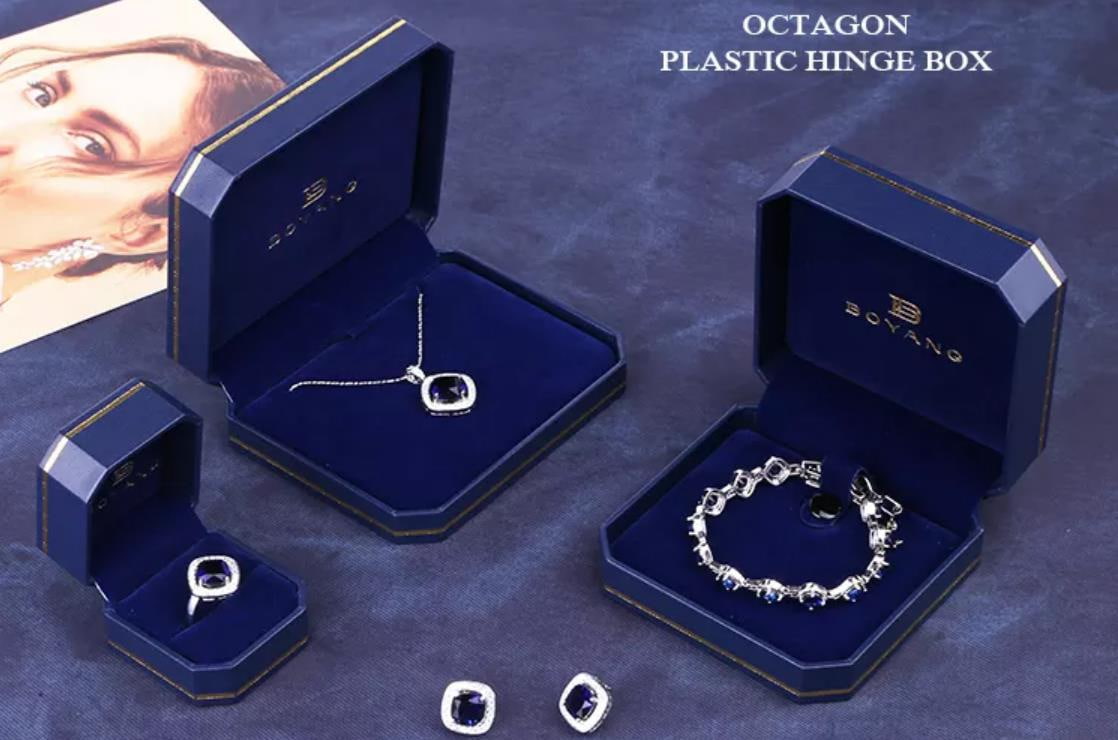You can share
- Share to Facebook
- Share to Google+
- Subscribe to our
- Share to Linkedin
- Share to Twitter

In recent years, with the awakening of consumers' environmental awareness, "sustainability" has become the core keyword of the global consumer market. As a representative of the high-end consumer field, how the jewelry industry implements the concept of environmental protection in the packaging process is not only related to the brand image but also an important competitive advantage in attracting a new generation of consumers. This article will provide jewelry brands with a practical guide to environmentally friendly packaging from three dimensions: material selection, design strategy, and consumer communication.
(1) Consumer demand
The survey shows that 73% of consumers are more willing to pay a premium for environmentally friendly brands. Jewelry is an emotional consumption carrier. Consumers not only pay attention to the product itself but also pay more attention to the values conveyed by the brand. Environmentally friendly packaging can effectively enhance brand favorability, especially in scenes such as weddings and anniversaries. The concept of environmental protection is highly consistent with the "eternal" meaning of jewelry.
(2) Policies and industry regulations
Driven by policies such as the EU's "Disposable Plastics Directive" and China's "Dual Carbon Goals", the problem of excessive packaging is strictly regulated. For example, France has enacted legislation to prohibit the destruction of unsold luxury goods, forcing brands to reduce resource waste from the source. Environmentally friendly packaging can help avoid policy risks in advance and establish compliance operation advantages.
(3) Brand differentiation breakthrough
While most jewelers are still using traditional plastic boxes and velvet linings, brands that take the lead in using environmentally friendly packaging can quickly seize the "green high-end" mindset. For example, the Danish brand Pandora announced that it would completely eliminate plastic packaging by 2025, and its recyclable paper box design became a hot topic on social media.
(1) Recycled fiber materials
FSC-certified paper: Use recycled paperboard certified by the Forest Stewardship Council to ensure that the raw materials come from sustainable forestry.
Bamboo fiber box: Bamboo has a short growth cycle (it can be mature in 3-5 years), and the packaging box made of it has both toughness and natural texture beauty.
Application case: Tiffany & Co. uses blue recycled paper boxes to replace traditional pine wood boxes, reducing costs by 30% and carbon emissions by 60%.
(2) Bio-based degradable materials
PLA polylactic acid: A degradable plastic substitute extracted from corn starch that can be naturally decomposed within 180 days.
Mushroom mycelium: Combine agricultural waste with mycelium to customize a lining mold with cushioning properties suitable for fragile jewelry.
Technical reminder: Degradation conditions (such as industrial composting or home composting) must be clearly marked to avoid misleading consumers.
(3) Recycling system
Leasing packaging: Launch recyclable metal jewelry boxes, which consumers can recycle in stores after paying a deposit.
Upgrading and transformation services: Encourage consumers to send back old packaging, which will be used for public welfare products after cleaning.

(1) Minimalist aesthetics
Reduce complex processes such as hot stamping and multi-layer printing, and convey a sense of luxury through embossing and nude color design. British brand Monica Vinader uses a single-color recycled paper box with a convex and concave brand logo printed on the lid, which reduces costs by 40% but increases customer satisfaction by 22%.
(2) Functional scenario extension
Transform packaging into reusable daily necessities:
- Jewelry box transformed into storage tray (built-in partition card slot);
- The outer packaging ribbon is changed to an environmentally friendly canvas handbag handle with adjustable length.
(3) Storytelling information transmission
Print a QR code on the inside of the packaging, and scan the code to view:
- Material traceability information (such as the coordinates of the bamboo planting site);
- Carbon footprint calculation process;
- Old packaging recycling guidelines.
(4) Modular structure design
With a removable lining, consumers can freely combine the grid size to adapt to jewelry of different sizes. Italian brand Bulgari launched a magnetic layered jewelry box, and a single package can meet the mixed storage needs of necklaces, rings, and earrings.
(1) Pricing strategy
Cost transfer: Include packaging costs in product pricing, but clearly state that "this product includes X yuan of environmentally friendly packaging fees.";
Member incentives: Open an environmentally friendly packaging subscription service, and annual members can upgrade to a limited edition plant dye gift box for free.
(2) Experiential marketing
Stores set up "Packaging Transformation Workshops" where consumers can exchange old jewelry boxes for handmade, environmentally friendly material packages;
Introduce a "Unboxing Ritual" short video tutorial to teach users how to transform packaging boxes into jewelry display stands.
(3) Data-based proof
Display the quantitative results of environmentally friendly packaging on the sales page: "Using this packaging has saved XX trees, which is equivalent to reducing XX kilograms of carbon emissions." The American brand Catbird transforms packaging data into part of its brand story through its annual environmental report.
Case 1: France's Chaumet "Beehive Project"
Taking the protection of bees (brand symbol) as the starting point, it launched a biodegradable honeycomb cardboard jewelry box with a natural beeswax coating on the lining. After the packaging was launched, the brand's social media interaction increased by 300%, and it was permanently collected by the Paris Natural History Museum.
Case 2: Domestic designer brand YIN Yin
Using the concept of "one box for a lifetime", the jewelry box is designed as a plantable pulp material, which can grow mint or basil when buried in the soil. Consumers post the growth process of plants on social platforms, forming secondary communication fission.
The implementation of environmentally friendly jewelry packaging requires full-link collaboration from the supply chain, design, and marketing teams. Brands can start with a small-scale pilot (such as a limited series of products), collect user feedback, and then gradually iterate. When environmental protection becomes part of the brand's genes, packaging is no longer just a container but an important medium to connect consumers' emotions and convey brand values.